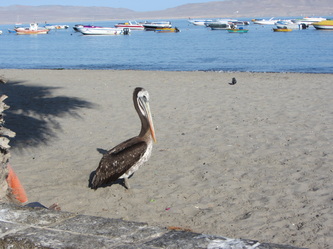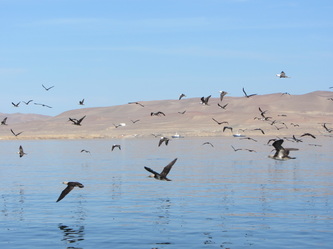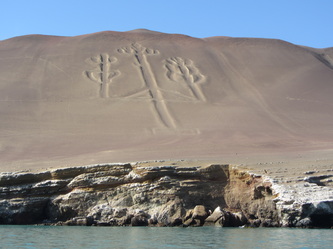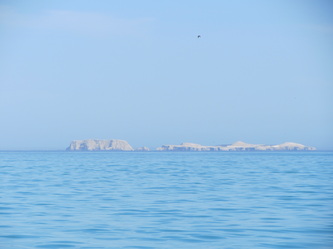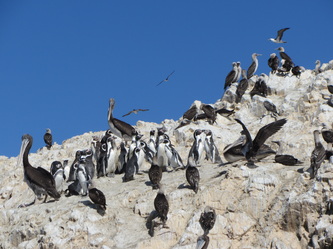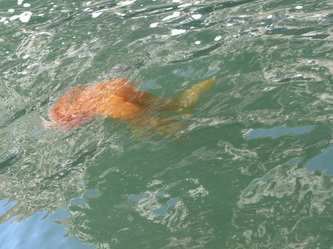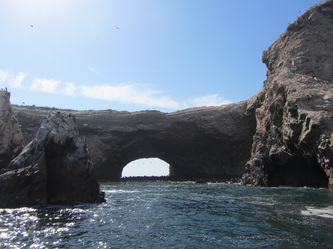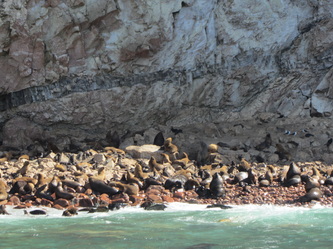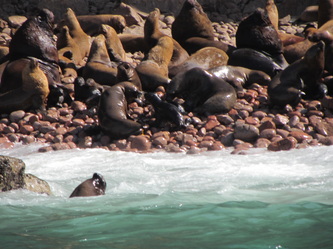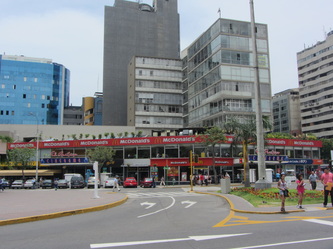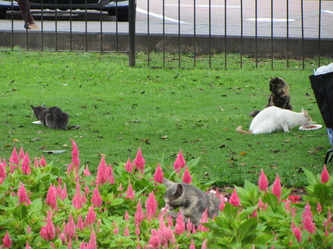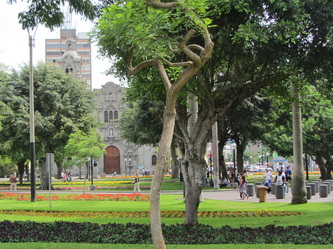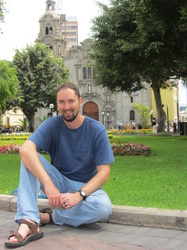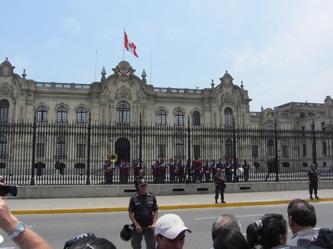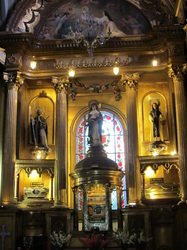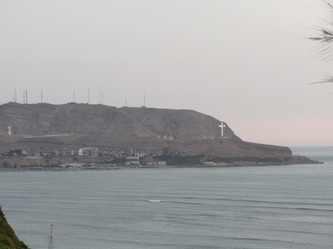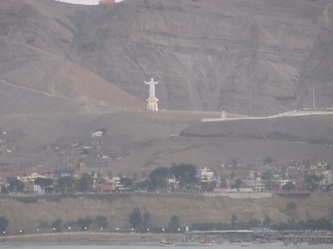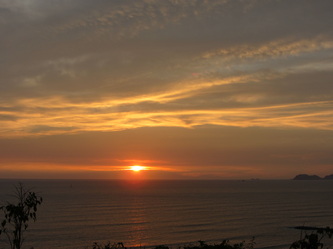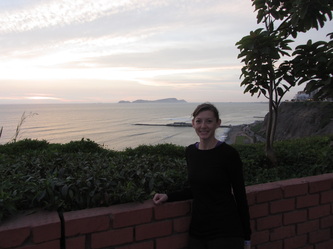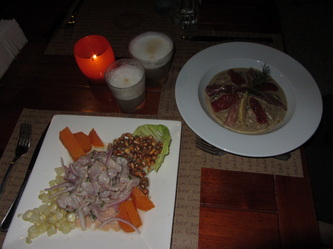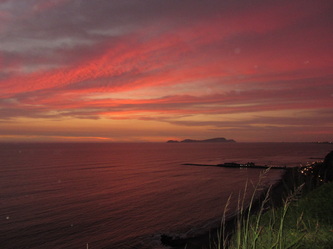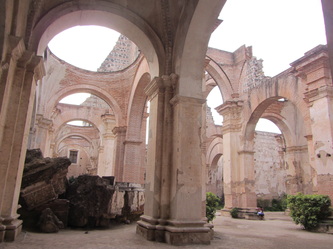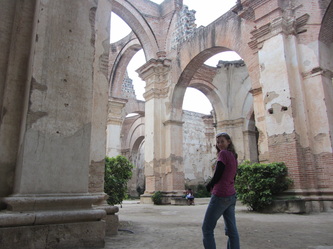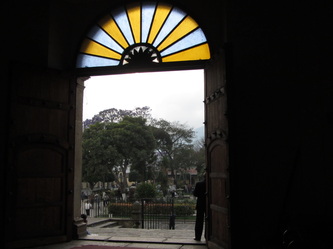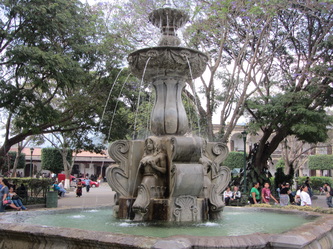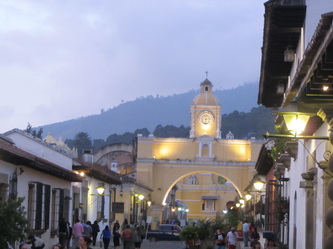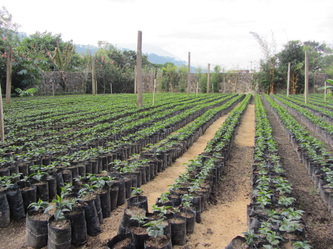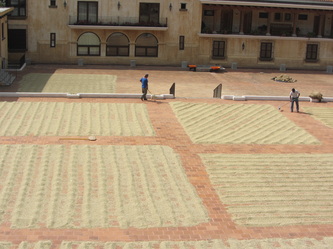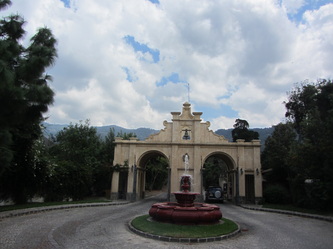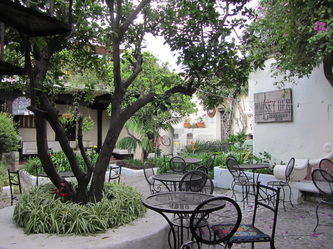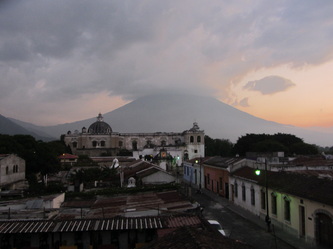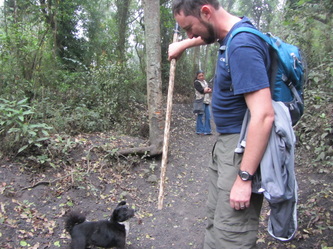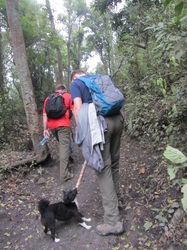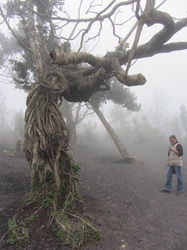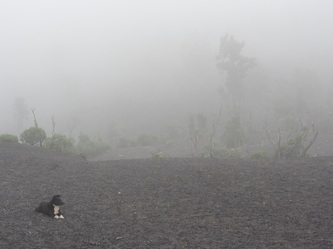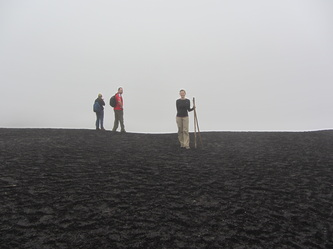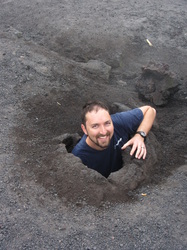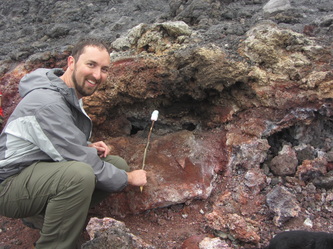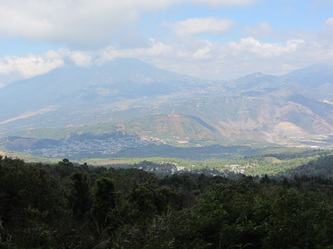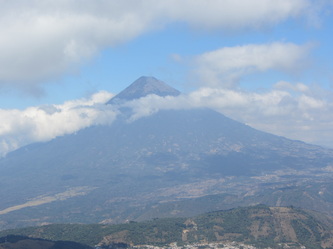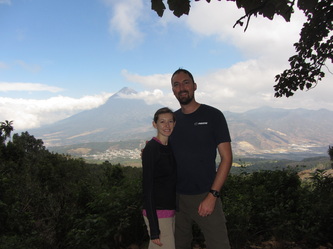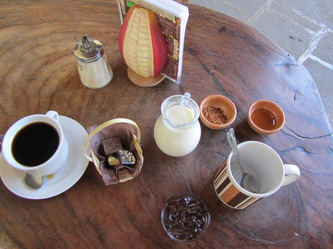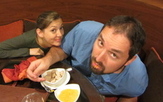Our time in Peru is spent traveling what is known as “The Gringo Trail.” Pretty much, you start out in Lima, work your way around the south, then start heading north until you end up in Cusco (Machu Picchu area). So like good little Gringos, we headed from Lima down to Pisco/Paracas. Here we got our first taste of just how hot southern Peru can get. HOT! Paracas is a beach town with its major attraction being the Ballestas Islands, a protected wildlife reserve. Tourists can ride out in a motor boat around the island, which we totally did. On the way to the islands, we got a little “Nazca Lines” preview with “The Candelabra” which is a giant geoglyph (figure) etched on the side of a hill. Specialists don’t know what is figure really represents or any details other than it was strategically placed here where there is virtually no rainfall, so the figure has remained intact all these years. Nearby pottery has dated to 200 B.C.E. (the time of the Paracas people) - Pretty incredible! Once we got to the reserve, there were thousands of birds, penguins, sea lions, BABY sea lions, gigantic jelly fish…it was awesome. A perfect way to spend one of our days.
We didn’t spend too much time in Paracas, since it was a pretty small town and completely flooded with tourists. Our hotel and the main hangin’ spot was in Pisco (about 10 minutes away by cab). This town is pretty local, with much fewer tourists running amuk. Our hotel was super cozy, and we really thought we could stay there for a long time, except that is was friggin’ hot and we were pretty ready to move on.
We did have an interesting adventure one day out to a neighboring town called El Carmen. There was an Afro-Peruvian festival called Negro Verano, supposedly one of the best festivals in all of Peru. After researching it online, checking our “trusty” Lonely Planet, and asking around, we thought we had figured out the location and timing and headed out on several local style van-buses out into the middle of nowhere. We arrived around 2:00 pm to find that the festival only started at 8:00 pm, which was inconvenient for us, since the shuttle buses stopped running at 7:00 pm to get back into town. The town was incredibly tiny and filled with true gringo vagabonds. They littered the streets with that unshowered, “I had a REALLY tough night” sort of look about them. After asking around, we realized pretty quickly that we had timed things horribly and were going to miss the festival altogether. The only thing open was a tourist office, I mean, a small room in a guy’s house where he had a few pieces of clay llama art for sale and some newspaper clippings pinned to the walls. He was wearing only pants. Rightfully so, since it was a billion degrees. We tried to communicate with him in Spanish, and started getting somewhere when Amy asked him to explain the town history to us very, very slowly. He was a good sport. You can only imagine speaking word-for-word, taking about 30 seconds to say one sentence. But, it was successful and we got the gist. Back in the day, Africans were brought all over the world by Europeans and the Spanish were no exception. They brought thousands of African people to South America, including Peru, and made them slave laborers. This town of El Carmen has a high Afro-Peruvian population, hence the annual festival. It would have been pretty sweet to see the festival, but again, no such luck. Instead, Amy asked if this nice man would play something “traditional” for us, and the man took out his fiddle and began to play and sing. His little grand-daughter promptly ran in and started singing and dancing. These are the best experiences!
So, we made it back to Pisco, spent the evening in the Plaza de Armas (all towns have this – it’s like a central park) and watched some local kids breakdance. Not quite what we had planned, but quite enjoyable none-the-less! Plus, Amy loves watching break-dancers!! (Please, folks, allow them to hang out in your parks. They liven up the atmosphere and it gives the young kids a place to hang!)
We didn’t spend too much time in Paracas, since it was a pretty small town and completely flooded with tourists. Our hotel and the main hangin’ spot was in Pisco (about 10 minutes away by cab). This town is pretty local, with much fewer tourists running amuk. Our hotel was super cozy, and we really thought we could stay there for a long time, except that is was friggin’ hot and we were pretty ready to move on.
We did have an interesting adventure one day out to a neighboring town called El Carmen. There was an Afro-Peruvian festival called Negro Verano, supposedly one of the best festivals in all of Peru. After researching it online, checking our “trusty” Lonely Planet, and asking around, we thought we had figured out the location and timing and headed out on several local style van-buses out into the middle of nowhere. We arrived around 2:00 pm to find that the festival only started at 8:00 pm, which was inconvenient for us, since the shuttle buses stopped running at 7:00 pm to get back into town. The town was incredibly tiny and filled with true gringo vagabonds. They littered the streets with that unshowered, “I had a REALLY tough night” sort of look about them. After asking around, we realized pretty quickly that we had timed things horribly and were going to miss the festival altogether. The only thing open was a tourist office, I mean, a small room in a guy’s house where he had a few pieces of clay llama art for sale and some newspaper clippings pinned to the walls. He was wearing only pants. Rightfully so, since it was a billion degrees. We tried to communicate with him in Spanish, and started getting somewhere when Amy asked him to explain the town history to us very, very slowly. He was a good sport. You can only imagine speaking word-for-word, taking about 30 seconds to say one sentence. But, it was successful and we got the gist. Back in the day, Africans were brought all over the world by Europeans and the Spanish were no exception. They brought thousands of African people to South America, including Peru, and made them slave laborers. This town of El Carmen has a high Afro-Peruvian population, hence the annual festival. It would have been pretty sweet to see the festival, but again, no such luck. Instead, Amy asked if this nice man would play something “traditional” for us, and the man took out his fiddle and began to play and sing. His little grand-daughter promptly ran in and started singing and dancing. These are the best experiences!
So, we made it back to Pisco, spent the evening in the Plaza de Armas (all towns have this – it’s like a central park) and watched some local kids breakdance. Not quite what we had planned, but quite enjoyable none-the-less! Plus, Amy loves watching break-dancers!! (Please, folks, allow them to hang out in your parks. They liven up the atmosphere and it gives the young kids a place to hang!)
